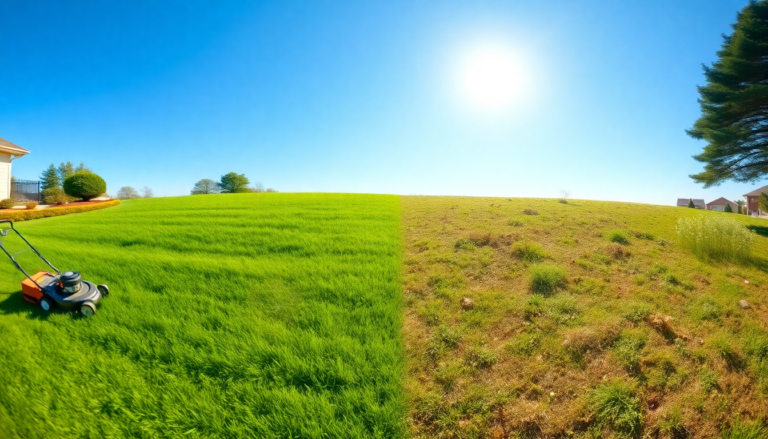Argomenti trattati
Understanding your lawn’s needs
Everyone dreams of a vibrant, green lawn, but achieving that ideal can often feel like an uphill battle. If your lawn resembles a patchy mix of green and brown with bare spots, you’re not alone. Having realistic expectations is crucial; very few of us can maintain a lawn that is entirely weed-free or pristine like a golf course. According to turfgrass specialists, the key is knowing what your lawn needs and addressing common pitfalls in care.
The importance of proper mowing height
Mowing is a vital aspect of lawn care, but many people make the mistake of cutting their grass too short. This practice, known as scalping, can stress your lawn, much like a bad haircut does for you. When grass is cut too low, it becomes vulnerable and sparse, creating opportunities for weeds to take over. On the other hand, maintaining a higher mowing height promotes deeper root growth, enhancing the grass’s resilience to environmental stressors like extreme temperatures.
When mowing, aim to remove no more than one-third of the leaf area at a time. Different grass types have specific ideal mowing heights, so it’s beneficial to identify the kind of grass you have. If you’re unsure, your local extension service can help identify your grass type and suggest appropriate mowing heights for your area.
Dealing with pet damage
If you notice brown or gold patches in your lawn, especially around areas where pets frequently relieve themselves, you’re likely dealing with pet-related damage. The concentrated salts in animal urine can dehydrate grass, leading to unsightly patches. Interestingly, you might also observe a green ring around the dead areas, as the grass attempts to recover by utilizing the nitrogen in the urine.
To mitigate this damage, it’s advisable to dilute the affected areas with water immediately after your pet has done its business. Alternatively, you could train your pet to go in less visible spots or areas that are mulched. If you need to repair the lawn, remove the dead grass, prepare the soil, and replant with seed, ensuring you keep the area well-watered until the new grass takes root.
Timing your fertilizer applications
Another common mistake in lawn care is the improper timing of fertilizer applications. Applying fertilizer too early can lead to wasted nutrients, as grass roots aren’t yet active enough to absorb them. For warm-season grasses, the best time to fertilize is in the spring when soil temperatures reach around 65 degrees Fahrenheit. Conversely, cool-season grasses thrive when soil temperatures are in the 50s, which also typically falls in the spring months.
Since the timing for fertilization can vary from year to year, it’s helpful to check local soil temperature maps. This ensures that you apply fertilizer at the right time for optimal grass growth. Additionally, ensure that you apply fertilizer evenly, as overlapping applications can cause dead spots in your lawn.
The role of soil testing
Healthy turfgrass requires at least 16 essential nutrients for proper growth. Before applying any fertilizers, it’s wise to conduct a soil test to determine any nutrient deficiencies. Most local extension services can perform soil testing for a nominal fee. Once you have your results, you can tailor your fertilizer application based on the specific needs of your lawn.
Remember to follow the instructions on the fertilizer bag closely. If you’re unsure of your lawn’s square footage, you can easily measure it using online mapping tools. When filling your spreader, do so on a hard surface to avoid any spills on your grass, and always sweep up any fallen fertilizer to prevent damage.
Managing weeds effectively
Weeds can be a persistent problem, even when you’re using lawn care products. To effectively manage weeds, it’s crucial to understand the timing of herbicide applications. Pre-emergent herbicides are designed to prevent weeds from germinating, and they need to be applied when soil temperatures reach about 55 degrees Fahrenheit. If applied too late, many weeds will have already sprouted, making them more challenging to control.
It’s also important to differentiate between annual and perennial weeds. For example, dandelions are perennial and require post-emergent herbicides for effective removal. If you’re unsure about the types of weeds in your lawn, consulting with local experts can provide valuable insights and tailored advice for your area.

